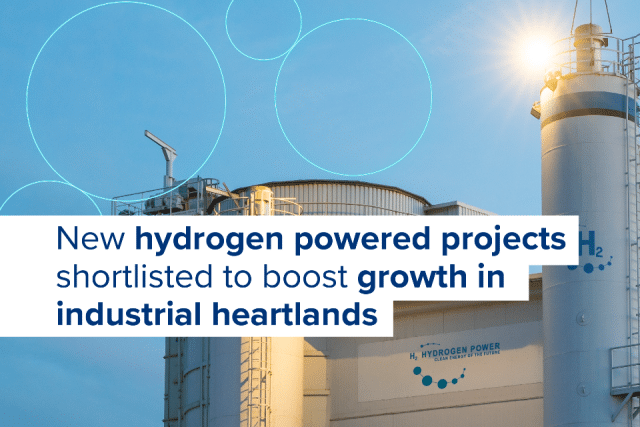Reducing electrolysis costs, support for first-mover projects in the UK
By Julian Atchison on April 13, 2025
Department for Energy Security and Net Zero announces Second Hydrogen Allocation Round shortlist

Click to learn more about the 27 low-emission hydrogen projects shortlisted by the UK Department for Energy Security and Net Zero for funding.
27 low-emission hydrogen projects have been shortlisted for funding by the UK’s Department for Energy Security and Net Zero. End-use applications include power generation, glass manufacturing, brick making, SAF production, and a marine ammonia fuel project in Shetland. The First Hydrogen Allocation Round saw 11 projects allocated over £2 billion in funding, including the HyMarnham Power project (see below).
Although in the very early stages of development, Statkraft UK is planning a renewable ammonia production project in mainland Shetland, targeting the marine fuel market. Statkraft is also developing a hydrogen-to-SAF project at Scatsta Airport in Shetland.
We are deploying hydrogen at a commercial scale for the first time – not just investing in a technology – but investing in British jobs, our proud manufacturing communities and our energy security. From distilleries and sustainable aviation fuel to public transport and clean energy generation, hydrogen can power our everyday life and unlock clean energy growth across the country as part of our Plan for Change.
UK Industry Minister Sarah Jones, in the Department for Energy Security and Net Zero’s official press release, 7 Apr 2025
Awarded funds in the First Hydrogen Allocation Round (HAR1), the HyMarnham Power project is being developed on the site of the former High Marnham coal power plant by GeoPura and waste processing specialist JG Pears. As well as the deployment of renewable energy and electrolysis capacity, an ammonia-to-power project will see ammonia gas recovered from agricultural waste, cracked and fed into GeoPura’s Hydrogen Power Unit (HPU) technology. The project received planning approval from the local council in February 2024.
Removing electricity levy, roadmap to cheaper electrolysis
In the Chancellor of the Exchequer’s Spring Statement, the UK government has indicated it will remove Climate Change Levy costs from electricity used in electrolysis to produce hydrogen, with a legislative review underway. The Levy is currently charged on specific energy commodities in the UK, aiming to reduce GHG emissions from commercial energy use.
Exempting electricity used for electrolysis from the Levy is one of fourteen policy recommendations from Hydrogen UK and RenewableUK in the Splitting the Difference roadmap. The First Hydrogen Allocation Round “achieved” an average price of £241/MWh amongst its funded projects, but further steps are needed to bring the average price down to £100/MWh (making hydrogen competitive with gas fuel).
Electricity accounts for 70% of the price of electrolytic hydrogen produced in the UK, and policy changes such as fixing power prices, removing barriers to co-location of renewable and electrolysis resources, incentivizing the flexible use of electrolysers, allowing developers to account for regional carbon intensity when purchasing power from the grid, and development of a strategic hydrogen transmission network linking Scotland, England and Wales.